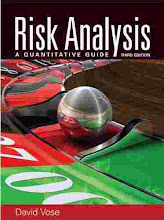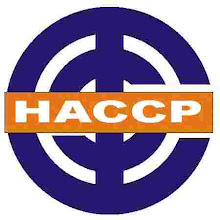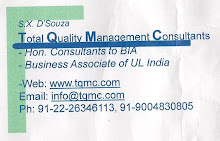What Australian manufacturers and exporters need to know about European Product legislation and CE marking when producing or exporting their products to the European Union
By Kim Niemans, Consultants Europe
What is CE Marking?
15 EU members and candidate states
What are the implications for industry?
What are the administrative procedures?
- Declaration of Conformity
- Technical Construction File (TCF)
- CE User Manual
Which product groups must be marked?
Which product Directives have been adopted?
What are Harmonized European Standards?
Who is liable for a product?
Authorized representation
Is there a relation between CE Marking and ISO 9000?
Consultants Europe - What can we do for you?
Useful Resources
What is CE Marking?
The CE marking is a European proof of conformity and is also known as "Trade Passport to Europe" that allows manufacturers and exporters to circulate products freely within the 15 European Union (EU) members. The letters, "CE" -- French for "Conformité Européne," indicate that the manufacturer has satisfied all assessment procedures specified by law for its product to be sold on the European market.
Although consumers may perceive the CE marking as a quality mark, it is not. The CE mark stands for the minimum safety requirements. The CE marking addresses itself primarily to the national surveillance authorities of the member states, and its use simplifies their task. Just looking at the CE marking will not tell surveillance authorities to which directive a given product complies. Rather, it is the declaration of conformity that contains the details of the directive(s) to which the product complies and the standards that were relied upon in assuring compliance.
The CE marking must be affixed to the product, to its data plate or, where this is not possible or not warranted on the account of the nature of the product, to its packaging, if any, and to the accompanying documents by the manufacturer, the authorized representative in the community or, in exceptional cases, by those responsible for placing the product on the market. The CE marking must be affixed visibly, legibly and indelibly. Where special provisions do not impose specific dimensions, the CE Marking must have a height of at least 5 millimetres.
15 EU members and candidate states- Austria (1995),
- Belgium (Founder Member in 1957),
- Denmark (1973),
- Finland (1995),
- France (FM 1957),
- Germany (FM 1957),
- Greece (1981),
- Ireland (1973),
- Italy (FM 1957),
- Luxemburg (FM 1957),
- The Netherlands (FM 1957),
- Portugal (1986),
- Spain (1986),
- Sweden (1995) and
- United Kingdom (Great Britain)(1973).
Candidate States
Estonia (applied for membership in 1995), Latvia (1995), Lithuania (1995),Poland (1994), Czech Republic (1996), Slovakia (1995), Hungary (1994),Slovenia (1996), Romania (1995), Bulgaria (1995), Malta (1990), Cyprus(1990) and Turkey (1987).
EU is Growing
Already in discussion for two years, in the hope to be allowed into the EU during the next two or three years, are: Poland, Hungary, Slovenia, The Czech Republic, Cyprus and Estonia. As for Romania, Bulgaria, Slovakia, Latvia, Lithuania and Malta, it is their objective to become member states around 2004.
What are the implications for industry?
One of the objectives of the EU is the realization of an internal (single) market: a market in which products can be traded freely without any trade restrictions. The adoption of harmonized European product legislation and the CE Marking offer manufacturers and exporters great advantages by eliminating differing national product regulations among members of the EU and the signatory states of the European Economic Area Agreement.
This new European legislation has far-reaching consequences for industry both within and outside the EEA. Manufacturers and exporters are now confronted by new health and safety requirements for their products. They must comply with mandatory EU regulations, carry out associated procedures, and develop a system for complying with health and safety requirements and for documentation.
Products that do not carry the CE marking and are not in compliance with the directives, may be restricted, prohibited from sale or forced to withdraw from the European market. Manufacturers and authorized representatives or anyone responsible for placing products on the European market can be held personally liable for damages or injury.
What are the administrative procedures?
Before the CE marking can be affixed to the product, the manufacturer must follow certain procedures. These procedures may differ for each directive and each product. The following procedures may be applicable: declaration of conformity; compiling a technical construction file: applying for and filing an EC Type-examination certificate; compiling a user manual; and affixing the CE marking.
1. Declaration of Conformity
The declaration of conformity must contain the following information:
- Product identification;
- The EU directives complied with;
- Standards used to verify compliance with the directives;
- Name of notified body if required by the directive;
- Be signed by or on behalf of the manufacturer or the authorized representative and identify that signatory;
- The manufacturer's name and address.
2. Technical Construction File (TCF)
Most directives impose an obligation for the manufacturer or the authorized representative to provide a technical file that demonstrates the technical basis for conformity of the product to the requirements of the directive. The manufacturer must implement internal measures to ensure that the product remains in conformity. The file is intended essentially for national surveillance authorities.
The TCF must be kept at the disposal of national surveillance authorities for inspection and control purposes, and be available for at least ten years, starting from the production date of the final product.
The main elements comprising a TCF are the following:
- Declaration of Conformity;
- A general description of the product;
- Design and production drawing and diagrams;
- Detailed technical data for essential aspects of the product;
- List of standards and or solutions applied;
- Report of calculations and tests that have been carried out;
- Certificate and inspection reports;
- In case of series production, the internal conditions that have been observed to safe-guard compliance with the directive;
- CE user manual.
3. CE User Manual
The directives usually have a direct relation to user safety. Information provided to a user plays an essential role in avoiding or reducing safety risks. Thus, a user manual is often an essential safety requirement. If not available in-house, it is advisable to seek technical and legal assistance in compiling the CE user manual. A user manual must contain all the information required for the correct and safe use of a product, including:
- Information on risks;
- Identification and discouragement of hazardous applications;
- Instructions on how the product can be put to safe use;
- Set out who is authorized to perform certain actions;
- Identification of appropriate safety precautions have to be taken.
- The CE user manual must be drawn up in the language of the country or countries in the EEA into which the product is imported and in the language of the country or countries in the EEA where the product is to be used.
Which product groups must be marked?
There are 23 product groups for witch CE marking is required:
- Air traffic management equipment & systems,
- Appliances burning gaseous fuels,
- Cableway installations to carry persons,
- Construction products,
- Electrical equipment,
- Equipment and protective systems for explosive atmospheres,
- Explosives for civil uses,
- Hot water boilers,
- Household refrigerators & freezers,
- Lifts,
- Machinery,
- Marine equipment,
- Measuring instruments,
- Medical devices,
- Active implantable medical devices,
- In vitro diagnostic medical devices,
- Non-automatic weighing equipment,
- Personal protective equipment,
- Pressure equipment,
- Simple pressure vessels,
- Recreational craft,
- Radio equipment & telecommunications terminal equipment,
- Toys and
- Trans-European conventional rail system
Which product Directives have been adopted?
The new EU product directives deal with large families of products or horizontal risks such as those addressed in the Electromagnetic Compatibility Directive. The manufacturer and exporter are responsible for ensuring the product meets the requirements for all applicable directives. The following directives (with the reference between brackets) have been adopted:
- Low Voltage (73/23/EEC)
- Simple Pressure Vessels (87/404/EEC)
- Safety of Toys (87/378/EEC)
- Construction Products (89/106/EEC)
- Electromagnetic Compatibility (EMC) (89/336/EEC)
- Machine Safety (98/392/EEC)
- Personal Protection Equipment (89/686/EEC)
- New Hot-water Boilers (92/42/EEC)
- Gas Appliances (90/396/EEC)
- Explosives for Civil Uses (93/15/EEC)
- Recreational Craft (94/25/EC)
- Non-automatic Weighing machines (90/384/EEC)
- Active Implantable Medical Devices (90/385/EEC)
- Equipment for Explosive Atmospheres (94/9/EEC)
- Telecommunications Terminal Equipment (91/263/EEC)
- General Product Safety Directive (2001/95/EC)
Most of the above-mentioned directives are amended by Directive 93/68/EEC, "Rules for the Affixing and Use of the CE Conformity Marking."
What are Harmonized European Standards?
EU product directives are limited to essential safety, health or other performance requirements in the general public interest. The technical details of how to meet these requirements are left to manufacturers who self-certify products, the three regional European standards organizations, CEN, CENELEC, ETSI, and government appointed product certification bodies.
Products that meet the essential technical standards developed by CEN, CENELEC and ETSI are presumed to conform to the requirements of EU directives and allowed to circulate freely within the European Union.
For many products, however, a manufacturer can choose not to comply with CEN, CENELEC, ETSI standards, but must then demonstrate that the product meets the essential safety and performance requirements of the directives.
Who is liable for a product?
Since the introduction of European product legislation and CE marking, product liability has become a very important factor for the manufacturer, exporter or importer in conducting trade in Europe. The central element of European product legislation is user safety.
If damage or injury is sustained from a particular product, the user may hold the manufacturer, authorized representative, agent or importer responsible. European legislation in the area of product liability allows users of products to claim damages as the result of an injury. All manufacturers, exporters and importers have a responsibility to ensure that the products they place on the market are safe. European product liability legislation provides instruments and enforcement for users who want to claim damages.
It is therefore necessary for parties involved in the placing of products on the European market to reach contractual agreements in order to cover liability issues.
Liability aspects should be covered not only in the CE marking administrative requirements such as the declaration of conformity, Technical Construction File and user manual, but also in the sales contract.
Authorized representation
One of the most important aspects of the CE marking regulation is that producers and exporters from Non-European countries need an European Authorized representative when they want to sell their products within the European Union. Only when a product conforms to the essential European requirements and there is an official European Authorized Representative, the product may be sold in the European Union.
The Authorized representative of a non-European product is responsible for the CE marking and safety of the product.
The Authorized representative is legally obliged to have a Technical Construction File, for inspection by the official notified authorities. In this File all technical specifications of the product have to be available.
Is there a relation between CE Marking and ISO 9000?
Companies that have in their possession a quality management certificate demonstrate with this that they have an efficient organizational form and that they have low failure costs. Failure costs are the costs incurred due to organizational shortcomings within the company. The quality system makes no reference to the quality of the product. The quality certificate is only a recommendation for customers that their order will be processed correctly and on time. In contrast to the quality system, the CE marking only indicates that the product complies with the essential requirements relating to safety, health, environment and consumer protection of the user.
Some directives explicitly make use of a quality management system (ISO 9000) as part of the conformity assessment. Only in specific cases this is a requirement to comply with CE marking directives.
If a company wishes to provide the customer with assurance about the functional quality of the product, the company needs to obtain a voluntary quality inspection mark. The inspection mark guarantees that products will conform to safety and functional requirements over the long term. It is sometimes also the case that these products meet the essential requirements of European Directives. In such cases, little extra effort is required to meet CE marking requirements.
Consultants Europe - What can we do for you?
Consultants Europe provides technical and legal services worldwide for European Product Legislation and CE marking certification. For more information consult our free 24 hours CE marking helpdesk atwww.ce-marking.nl
Consultants Europe is an international orientated technical and legal organisation with expertise in the certification and testing of products sold or traded on the European market. We carry out the entire CE marking certification process for designers, manufacturers, exporters and importers. We ensure that their products meet all requirements needed for compliance with European directives.
The expertise of Consultants Europe is based on a combination of practical and theoretical knowledge in product safety, engineering, quality assurance, technical documentation and the use of all facilities of test laboratories. Our experts identify hazards, asses risks and determine the appropriate safety measures. If required our technical engineers have the possibility to modify products in our own test laboratories to ensure compliance with the essential European requirements. Our legal department covers all aspects of product liability and the legal consequences that arise from the European product legislation.
Consultants Europe's unique resources and expertise has allowed it to develop an efficient and cost-effective certification program for all small, medium and large enterprises (SME). Consultants Europe has developed structured methods for companies to assess and improve the level of product compliance in accordance with each of the European directives.
Consultants Europe offers a complete range of technical and legal services that can be used by a company in the process of product certification. Our experts offer full support on all the directives such as compliance testing of products, compiling of user's manuals, risk analysis, technical files and legal advice.
Each service is carried out by our technical specialists and verified by our legal department. Consultants Europe is a continuing reference for distributors, agents, customer, insurance companies, surveillance authorities, etc. in Europe. Organisations worldwide can rely on our proven technical and legal support.
Consultants Europe will officially register your products. This will ensure optimal protection of your products against unauthorised imitation, counterfeit, or forgery of your product.
Consultants Europe offers the following services:
- Identification of applicable EU Directives for products
- Certification requirements for products to be sold or traded in or outside the European market
- Determining applicable European or international standards for products
- Supplying documentation on harmonised European Standards
- Single European Market legislation documentation
- Quality systems for CE Marking
- Product compliance testing
- Verification of tests conducted by an organisation or third party
- On-site consultations
- Audits regarding compliance testing
- Risk assessment
- Compiling of safety requirements and instructions
- Health and safety requirements
- Verification, drafting and translation of user manuals
- Verification and compiling of Technical Construction Files
- Drafting of Declaration of Conformity
- Product liability assessment and support
- Technical and legal support in case of disputes
- Modifications of the product.
- Conferences, seminars and training in theory and practise
- Practical guide books and software for CE certification of products
- Authorised representation in Europe
- Identifying Hazards, Risks and determining safety measures
- Product registration
Authorised Representation
One of the most important aspects of the CE marking regulation is that producers and Exporters from Non-European countries need to appoint an authorised representative when they want to sell their products within the European Union. This is applicable by law.
Consultants Europe acts as authorised representative for many organisations outside the EU. Consultants Europe Authorised Representation Services include:
- Verification of the classification of products and carrying out of a CE end-control. This CE end-control includes an investigation of the device and technical documentation (technical file), labelling and packaging;
- Use of Consultants Europe's name and registered address in Europe (label requirement); office, phone, fax, mail handling, etc.;
- Notification to the Competent Authorities of the CE Declaration of Conformity, with description of the concerned device and names and addresses of distributors established in the Community.
- Notification of the Competent Authorities of any changes in the product;
- Administration of the technical file; presentation of the file or parts of it to Competent Authorities, when approved by client;
- Technical and legal representation, assistance, and reporting in case of incidents reported by users, distributors, or National Competent Authorities.
- Organisation and carrying out, with the Manufacturer, the Incident Reporting.
- Carrying out of assessment and determination of the severity of incidents;
- Representation before the European Commission and national Competent Authorities, in case of recall or risk of product or withdrawal from the market.
- 24/7 "Product Information Desk" regarding all inquiries.
Useful Resources
New Approach to Standardization
This site provides access to the New Approach directives (unofficial versions), references to the relevant technical standards, information about and contact points for the European standards bodies and explanations of the underlying concepts of the New Approach.
Guide to the Implementation of Directives Based on New Approach and Global Approach
The Guide is intended to contribute to better understanding of directives based on the New Approach and the Global Approach and to their more uniform and coherent application across different sectors and throughout the Single Market.
New Approach directives
These sites contain several links, among which are lists of Notified Bodiesdesignated by the Member States and the EFTA countries (EEA Members) under the New Approach and Global Approach Directives.
New Approach Directives - List of directives and references of harmonised standards
A list of directive numbers and titles follows the latter. Clicking on the directive number (for example, "73/23" for the Low Voltage Directive) automatically links to the text of the directive as published in the Directory of Community legislation in force.
EUR-Lex
The portal to EU law containing the full versions of legislation.
What's New
The site contains an excellent overview of the New Approach documents available on the web.
European Free Trade Association (EFTA)
Sources for Standards
Lists the principal governmental and commercial sources for standards.
Legislative summaries of each New Approach directive may be accessed through SCADPlus. Product areas covered are:
- Toys
- Cosmetics
- Machines
- Machines
- Mobile machinery and lifting appliances
- Appliances for lifting persons
- Cableways for the carriage of passengers
- Personal protective equipment
- Lifts
- Hydraulically and oil-electrically operated lifts
- Equipment and protective systems in explosive atmospheres
- Pressure equipment
- Medical devices
- Electrical and electronic equipment and gas appliances
- Household appliances: labelling
- Domestic refrigeration appliances
- New hot-water boilers
- Gas appliances
- Ballasts for fluorescent lighting
- Low-voltage electrical equipment
- Electromagnetic compatibility of electrical and electronic equipment
- Other equipment
source
What is CE Mark?
Products that are exported to the EC and that are placed on the market for the final end user have to carry this mark. The manufacturer or his representative is required to issue a declaration of conformity which must be kept available to the enforcement authority for 10 years following the placing of the products in the market. He is required also to affixed the mark on the products, or its packaging, instructions or guarantee certificate.
The CE mark is as shown below and must be at least 5mm in height.
![]()
What it means to have CE Mark?
When the CE Mark is affixed, it means that the products conform to EMC(Electromagnetic Compatibility) Directive and other relevant Directives that are relevant to the products. Many electrical appliances also have to conform to Low Voltage Directive. Electrical toys will have to conform to Toy Safety Directive.
The EC declaration of conformity must include components like :
a) Description of the products.
b) A reference to the specifications under which conformity is declared.
The reference to the specifications does not necessarily mean that you have to test these specifications. Three scenarios are apparent.
i) The product intrinsically meets the requirements of the Directive and does not need testing. Most electronic products are not able to follow this option.
ii) Declaration is make on existing test results. If the products already conform to existing standards such as FCC for emissions and IEC 801 for immunity, then you may be confident that the product will meet the appropriate harmonized standards without further testing.
iii) Test fully to the harmonized standards or choose the technical file route. For complex and new products, this will be costly but is essential.
c) Signatory to bind the manufacturer or his representative.
d) where necessary, reference to the EC type examination certificate for radio transmitters.
Compliance with the CE Mark Directive
There are 2 routes for manufacturer to comply to the CE Mark Directive.
a) Self Certification
Most manufacturer will follow this route which is self certification to harmonized standards. Harmonized standards are those CENELEC or ETSI standards which are announced in the Official Journal of the European Communities (OJEC).
The advantage of certifying against standards is that there is no mandatory requirement for testing by an independent test house. The only requirement is that the manufacturer makes a declaration of conformity as mentioned above which references the standards against which compliance is claimed. The manufacturer have to make sure that he tests the product to assure himself that it does meet the requirements of the standards and this can be done in-house. In the long run, it is cheaper to have its own basic in-house equipments to test the product instead of sending it to an independent test house which is costly most of the time. By having these facilities, it will enable the manufacturer to design in the product to conform to the standards as most of the time, a lot of modification to the product needs to be done in order to conform to the standards.
b) The Technical Construction File
The second route is to generate a TCF(Technical Construction File) which will be held by the relevant authorites as soon as the product is placed on the market and for 10 years after the last item has been supplied. TCF should describe the apparatus, the procedures used to ensure conformity and a technical report from a competent body. It may or may not contain test data. The difference between this route and the first route is that the technical report or certificate is issued by a competent body.
This route is normally taken when existing standards cannot be applied or when testing is not practical because of the size of the product.
This route is also taken when manufacturer decides to apply the harmonized standards in part only, or when the product has been tested to standards that are believed to have met the essential requirements.
Find out other certification marks such as S Mark, VDE Mark, UL Mark, N Mark, F1 Mark here.
source











No comments:
Post a Comment